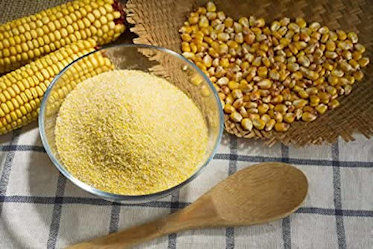|
Source of fibre and protein
Polenta contains both protein and fibre to help a person feel full. Fibre is also recommended to keep the digestive system functioning properly, to feed healthy gut bacteria, and to prevent constipation.
Polenta is gluten-free
For people looking for gluten-free dishes, polenta is a good option. Many sources of fibre, such as wheat, couscous, and rye, contain gluten.
Polenta is usually safe to be eaten by people with celiac disease or a gluten sensitivity. But people should check the ingredient list for other additives.
Rich in complex carbohydrates
Polenta contains complex carbohydrates, which provide long-lasting energy and help to maintain steady blood sugar levels. Polenta is an excellent source of complex carbohydrates.
Simple carbohydrates are broken down fast and can cause a person’s blood sugar levels to spike. Often, simple carbohydrates do not contain many nutrients either. Cakes, cookies, and white bread are examples of simple carbohydrates.
The complex carbohydrates in polenta are broken down slowly, which means they take longer to digest. This slow release can keep blood sugar levels steady.
Contains vitamin A
Although it does not contain large amounts of vitamins and minerals, polenta does contain some vitamin A.
According to the National Institutes of Health, vitamin A is necessary for the proper functioning of the kidneys, lungs, and heart.
Source of carotenoids
Polenta contains milled corn, which is a good source of carotenoids.
Carotenoids are thought to decrease the risk of certain diseases, such as some types of eye conditions and some cancers.
Low in fat
Polenta is naturally low in fat and can be eaten as part of a heart-healthy diet.
A person looking to reduce their saturated fat intake should cook polenta with water, plant milk, or broth instead of dairy milk, and avoid adding cheese or butter.
Contains essential minerals
Iron, magnesium, and zinc are all essential minerals. Although polenta does not provide large amounts of these minerals, they still count towards a healthful diet.
Low calorie
Polenta is low calorie, similarly to other whole grains that are cooked in a liquid. It provides about 70 calories per 100 grams (g) cooked serving.
Nutritious, whole foods that are low in calories, such as polenta, can be a good choice for people looking to lose or maintain weight.
|

